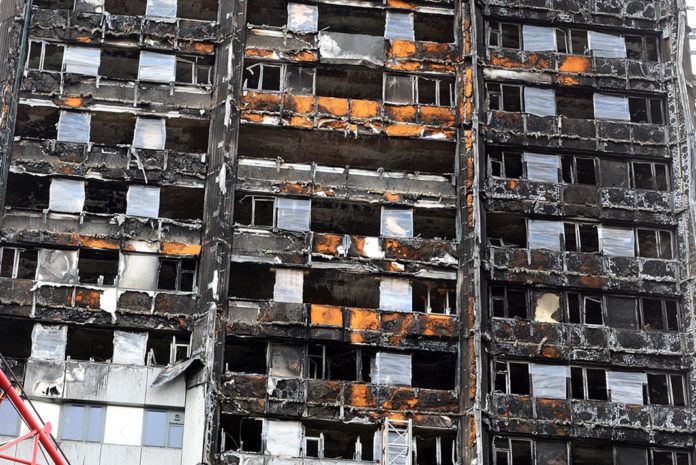Measures to ban combustible materials on the outside of some buildings in the wake of the Grenfell Tower Fire do not go far enough, James Dalton, director of general insurance policy at the Association of British Insurers (ABI), has said in a speech yesterday.
Addressing the Fire Protection Association’s Fire Summit 2018, he warned that the focus on high-rise rather than a wider range of high-risk buildings “runs the risk of unnecessarily limiting the public safety benefits that the welcome intervention from the government is designed to achieve”. Meanwhile, a full review of Approved Document B, which underpins the entire building regulation system when it comes to fire safety, has not even started yet.
It is nearly six months since Dame Judith Hackitt’s Independent Review of Building Regulations and Fire Safety set out plans for a complete revamp of the rules, and 16 months since the Grenfell Tower Fire caused 72 deaths. There have been nine years in which to learn lessons from the Lakanal House fire in which six people died.
In his speech, James Dalton,said: “For anyone who has watched footage of the Grenfell tragedy, the speed of the fire’s spread as the tower’s cladding ignited, is one of the most frightening images. One feature of the broken building control system is the amount of combustible material that has been permitted by the current regulations.
“Better control of the use of combustible cladding material on high-rise and high-risk buildings has long been a key ask of the ABI. So we were pleased to see the government take action to ban the use of combustible cladding on buildings containing flats, residential schools, care homes, hospitals and student accommodation – all over 18 metres.
“But as with so many things in life, the devil is in the detail. Although we are still waiting for the detail, the more our team got into the information that has been released to date, the more questions they started asking:
- “Why is the ban limited to buildings with a height greater than 18m? I accept that 18m is the height limit after which fire is more challenging for the Fire and Rescue Service to combat, but I’m struggling to understand why someone could, according to these proposals, build a care home or student accommodation in the future that is slightly lower than 18m in height and then cover it in combustible material. Put simply, combustible material does not belong on high-risk buildings housing the most vulnerable in society.
- “Why is the ban limited to flats, care homes, hospitals and student accommodation? It doesn’t make sense that someone could live in a high-rise residential building to which the ban applied but commute to work every day in an office block which is covered in combustible material. Nor for a child to go from their parents flat to which the ban applied to attend school in a building that is wrapped in combustible material. Of course, I recognise the government’s view that there is a higher risk where people are sleeping, and there are more stringent rules on evacuation for commercial properties, but why are hotels not covered by the ban on the use of combustible material?
“We need to step back and consider what ‘combustible’ should mean and be radical in our thinking to effectively protect all buildings and people at risk. Our concerns are clearly reflected in a letter from Steve Reed MP and 20 other MPs to Secretary of State, arguing that the ban on combustible material does not go far enough. The ABI will continue to make the argument that the ban on combustible materials in the limited types of buildings that have been set out to date, runs the risk of unnecessarily limiting the public safety benefits that the welcome intervention from the government is designed to achieve.”




